60 hours, 50 abortions: A California doctor’s monthly commute to a Texas clinic

- Share via
The protesters are already positioned when she pulls up in her rental car. One lurches at women approaching the clinic, rosary beads dangling from her outstretched palm. Another hands patients tiny fetus dolls that match their skin color.
The doctor tries to ignore them. There are demonstrators at every abortion clinic and they’re all the same, she thinks: a nuisance. In Northern California, where she lives, a man yells, “Don’t take the blood money,” as she arrives at work.
At least here, in Dallas, the protesters mostly stay on the sidewalk. The doctor slips inside the mirrored glass doors of the clinic — one of the busiest abortion facilities in the United States.
She comes here once a month, part of an unofficial network of physicians who travel across state lines to perform abortions in places where few doctors are willing.
It’s not yet 9 a.m., and the clinic’s waiting rooms are filled, navigating them a game of human Tetris. Women with their husbands. Women pushing strollers. Women alone.
The young doctor will spend 60 hours in Dallas this trip and perform 50 abortions. She will have to run in the hallways to keep up with her packed schedule.
The California physician was one of more than a dozen doctors interviewed by The Times who commute to other states to perform abortions. She allowed a reporter and a photographer to accompany her to Dallas on the condition that she not be named and that her face not be shown in photographs, citing concerns for her personal safety.
The doctor acknowledged that when she began traveling out of state to perform abortions, she was nervous, recalling stories of abortion providers who have been attacked or harassed while far from home. But she said that abortion doctors living in states where access has been restricted face heightened danger and deserve her help.
“I can’t have people scare me away,” she said.
The first step the doctor performs for patients seeking abortions is an ultrasound, and she has 80 scheduled today. That’s three, perhaps four, times the number of patients a physician would typically see in a shift — and a testament to the burden on abortion clinics in a state where so many have been shut down.
In the exam room, she is careful not to seem as though she’s in a rush. She pushes open the door smiling, instantly personable. She finds white coats too intimidating, so today she wears a sleeveless blouse with big, purple flowers.
A special kind of storytelling returns
For decades, Column One was a showcase for compelling storytelling in the Los Angeles Times. After a hiatus, it’s back every Thursday online, reimagined for the digital age. Here’s what readers can expect »
One patient carrying her 1-year-old wants to know whether she can breastfeed if she opts for pills that induce abortion. Another, thrilled when the doctor informs her she has naturally miscarried, leaps off the exam table and exclaims, “Thank you, Jesus!” A mother of three says, “I just want it out, is all,” before asking how much the termination costs. The price varies based on how far along the pregnancy is, but is typically around $700.
“It’s expensive, but it’s not as expensive as a baby,” the patient says.
“And diapers,” the doctor says.
“And waking up in the middle of the night,” the woman replies.
The California doctor grew up on the East Coast and decided she wanted to be a physician when she broke her arm as a child and watched a doctor set it in a sling.
In college, she joined the student chapter of Planned Parenthood after a pregnancy scare made real for her the importance of abortion access. But it wasn’t until she attended a protest against abortion restrictions in Washington, the spring before beginning medical school, that she considered a career performing abortions. A friend asked whether she was going to be an abortion provider.
“My exact words were, ‘Oh, I don’t really want to get shot, but yeah, I guess it’s important,’ ” she says.
She went into family medicine and then received specialized training in abortions. She works at several clinics in Northern California and states on her online dating profile that she is an abortion provider, considering it an essential part of who she is.
“I can’t walk down the street without thinking, ‘Oh my God, this is so crazy that people are controlling women’s bodies,’ ” she says.
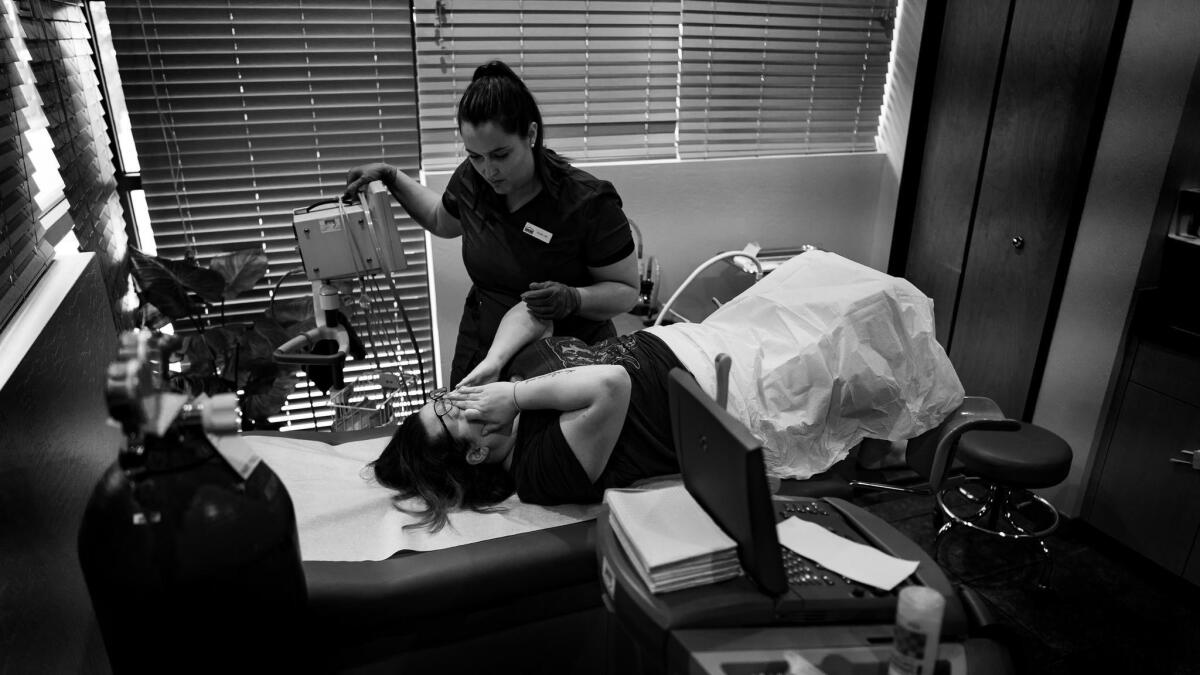
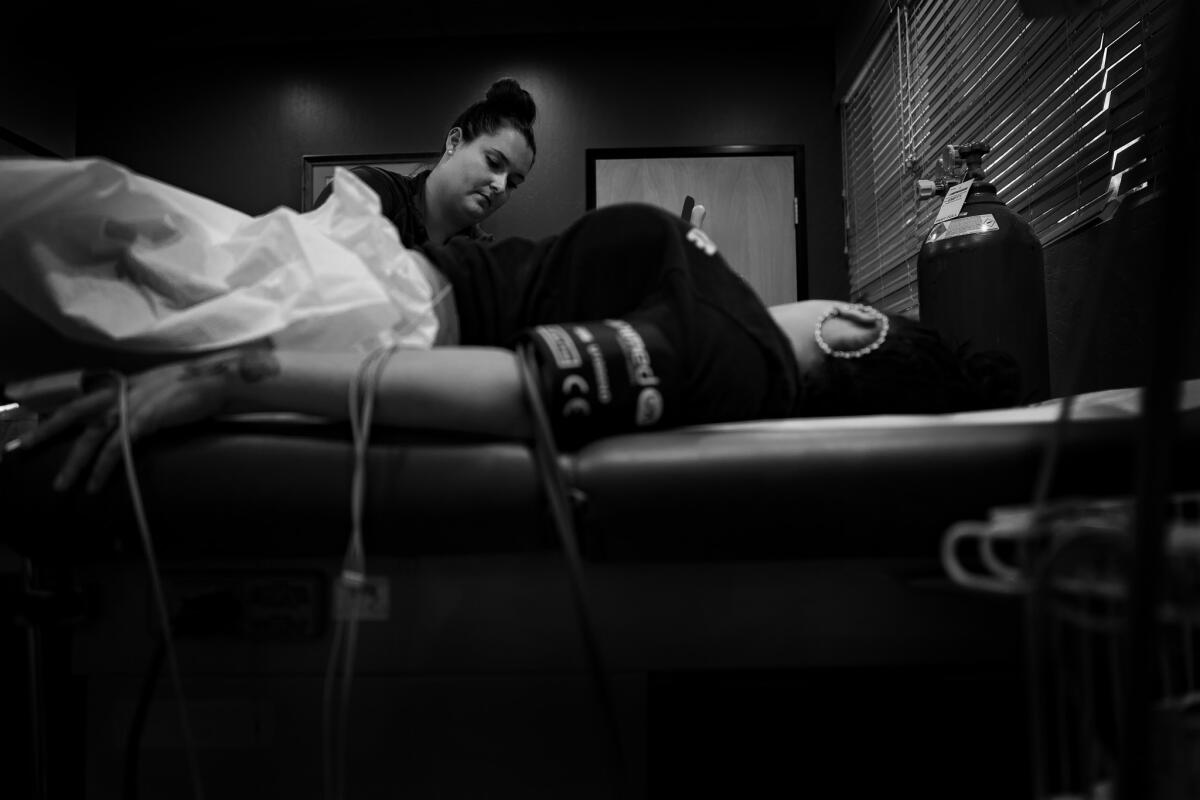

That control, she believes, leaves women feeling ashamed. Her patients tend to look at the floor when she enters the exam room, their bodies hunched forward, expecting to be treated badly, she says.
In the clinic, she tries to compensate for that by asking patients about themselves and their jobs. She nods as they explain their reasons for wanting an abortion: Some can’t afford more kids, others want to stay in school, still others don’t want to be connected to the man who got them pregnant. She answers questions about whether an abortion will affect fertility, or whether it will hurt. Her voice is soothing yet upbeat.
One patient’s ultrasound shows twins. The doctor has found that women often back out of the procedure when they learn there are two embryos, a discovery that transforms the pregnancy from an “it” to a “they.” The patient begins to cry. The doctor grabs her a tissue and rubs her shoulder.
Texas mandates a 24-hour waiting period between the ultrasound and the abortion; the doctor suspects the patient carrying twins may not come back.
Another patient asks the youthful-looking doctor if she has performed many abortions.
“Yes, I’m confident it’ll go well,” she says, her hand on the patient’s knee.
“I trust you.”
“I don’t deserve your trust yet, but hopefully tomorrow,” she says.
Behind the story: How a Times reporter gained intimate access to abortion clinics »
There are about 1,700 abortion providers nationwide, and they perform nearly a million abortions a year. According to the Guttmacher Institute, a research organization that supports abortion access, half of pregnancies in the U.S. are accidental, and half of accidental pregnancies end in abortion. One in four women will have an abortion in her lifetime.
But the doctors who do them are spread unevenly across the country. Some states have very few physicians willing to provide abortions. In California’s Bay Area, by contrast, there are so many physicians who want to do abortions that many can’t find work in the region.
In an attempt to address that imbalance, abortion rights activists created a program in 2016 to match clinics needing doctors with those who could travel to work. Estimates by abortion providers put the number of doctors commuting across state lines at around 100, three dozen of whom were matched by the program.
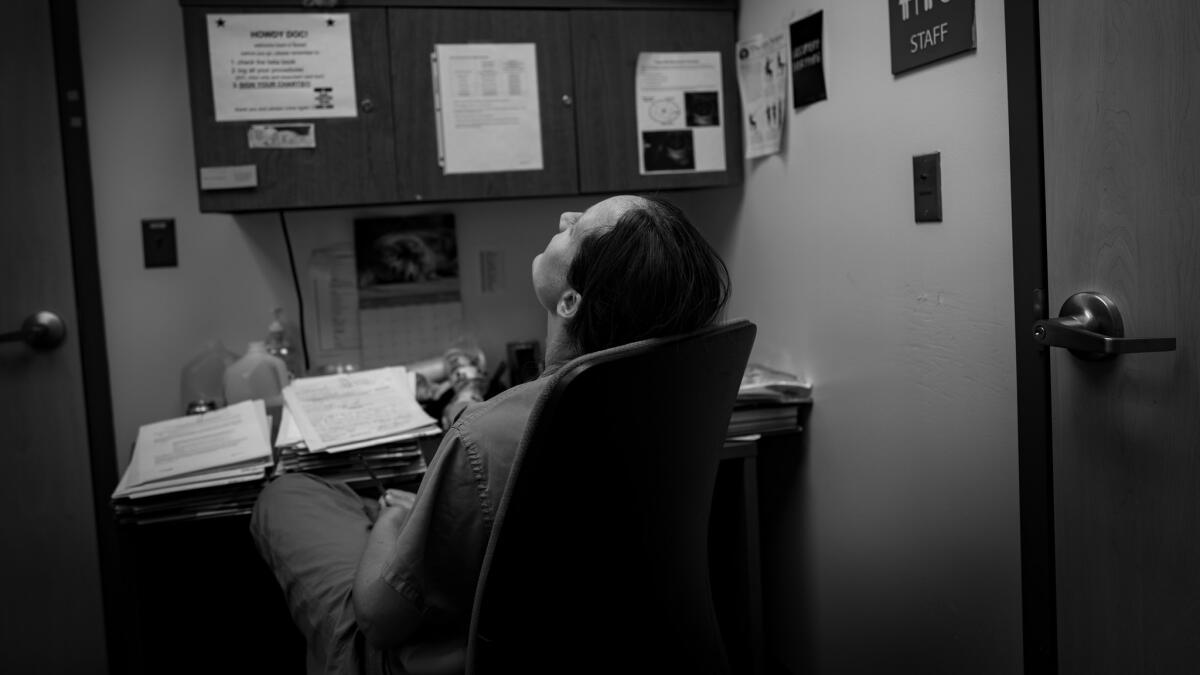
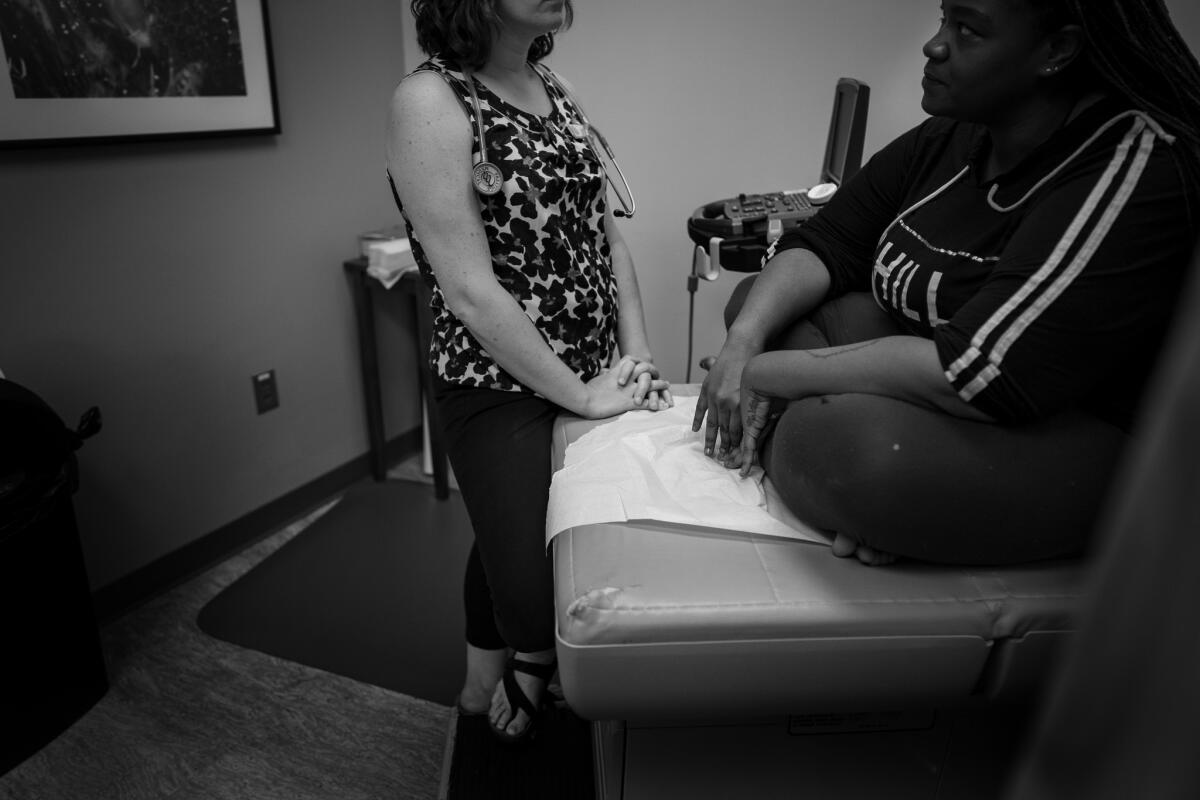
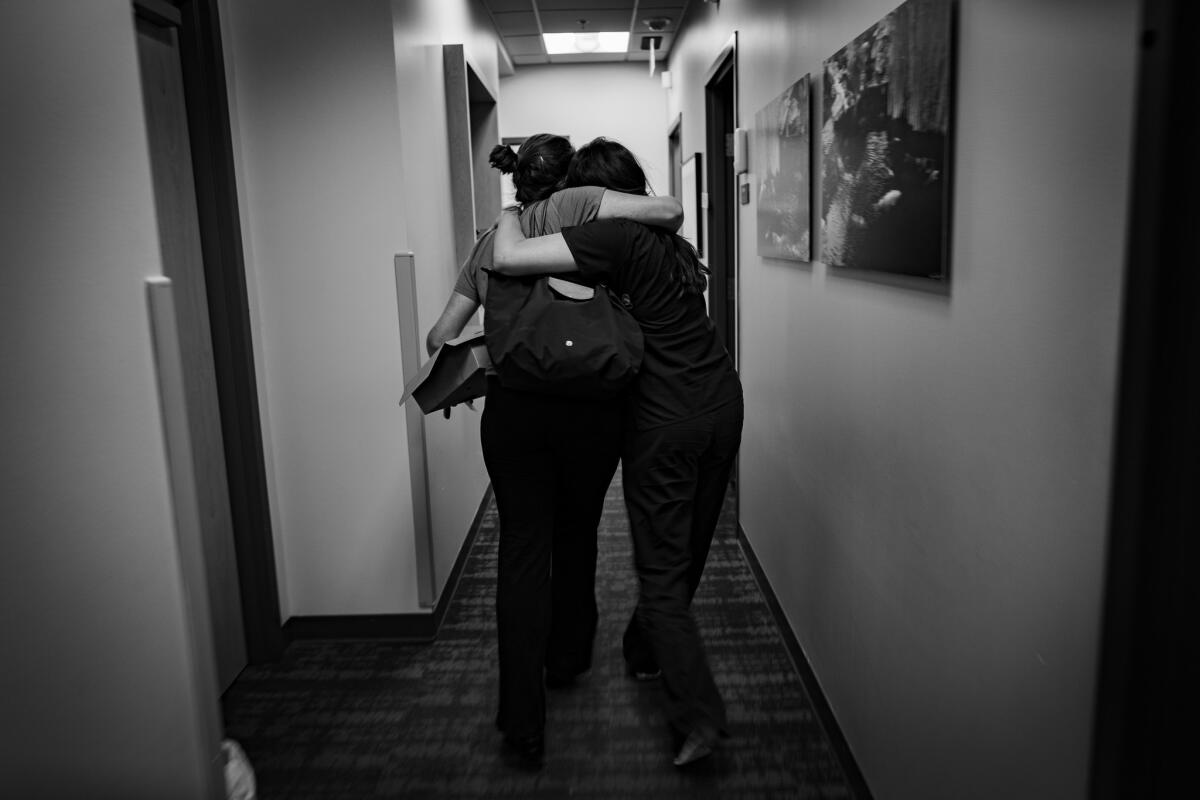
“As abortion restrictions became greater and some states became less friendly, it became more pressing to find physicians who were willing and able to travel,” said Mary Frank, a former abortion clinic administrator who lives in Minneapolis and now runs the matching program.
The states most in need of abortion doctors include Arizona, Florida, Kansas, Michigan and Texas, Frank said. Most of the traveling physicians come from Maryland, New York, Oregon, Washington and California.
The doctor knew when she trained to become an abortion provider that there wouldn’t be much demand for her in California, but she doesn’t want to move.
She has settled into what she describes as an almost stereotypical California lifestyle; she hikes year-round, recently completed a 100-mile bicycle ride and co-parents her best friends’ daughter. She is surrounded by doctor friends who support her work, a community she is reluctant to give up.
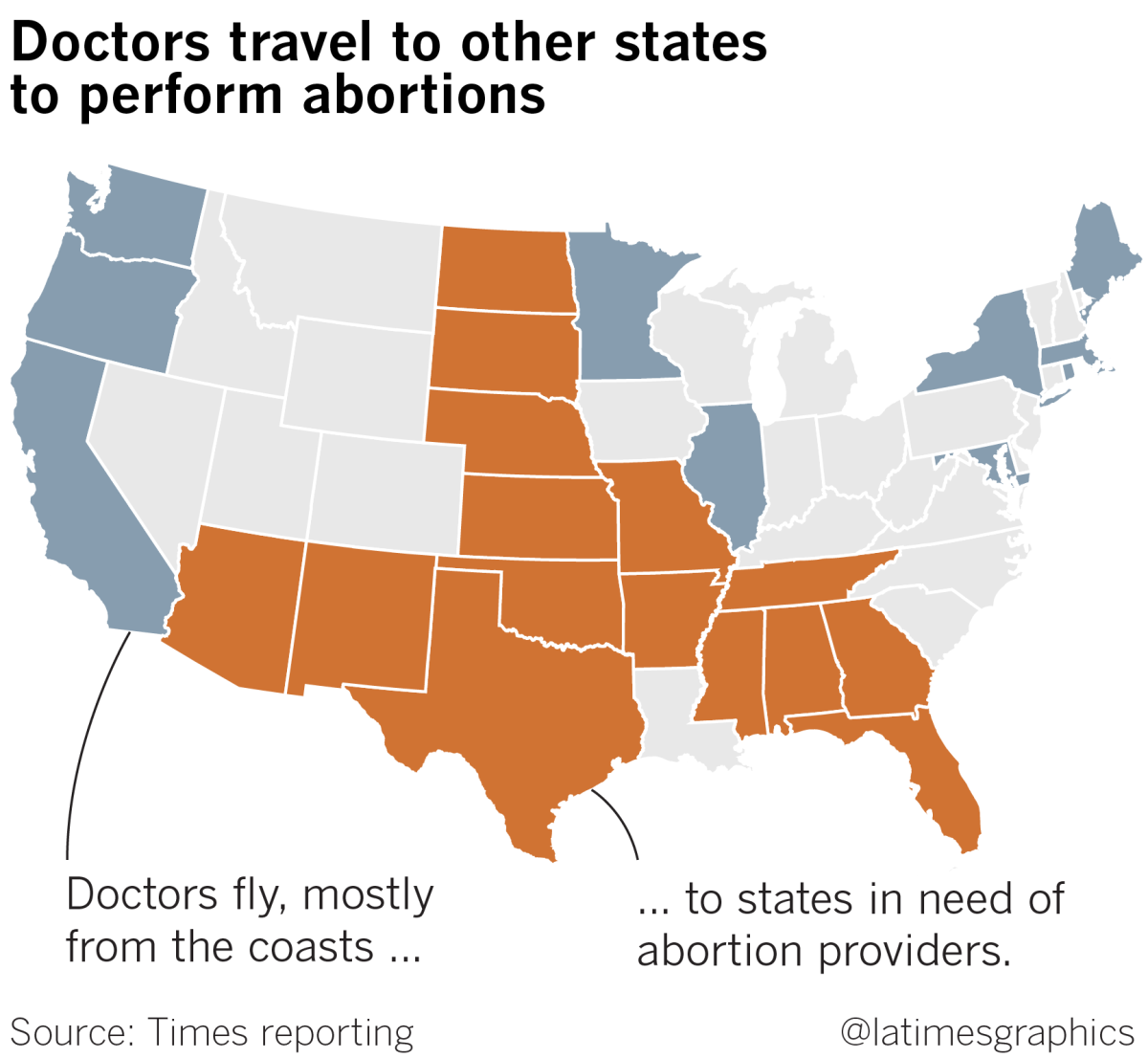
So when a friend told her in 2014 about an abortion clinic in Dallas that was short on doctors, she jumped at the opportunity to help. In California, just 5% of women live in a county without an abortion clinic, according to Guttmacher. In Texas, 43% do.
“My intention doing abortion work was always to do something other people wouldn’t do,” she says. “I’m not as much use in California.”
The situation in Texas is largely the product of a wave of legislation pushed by tea party candidates who took office in 2011 in several states. They passed laws making it more difficult for women to obtain abortions, such as requiring abortion clinics to upgrade to standards set for surgical centers, something experts say isn’t medically necessary. Some states required doctors to obtain privileges at nearby hospitals or register with the state as abortion providers.
The restrictions led to a dramatic drop in the number of abortion clinics in politically conservative states. Several states now have only one abortion clinic. California has more than 150. Texas has fewer than 20.
For many women across the U.S., it’s already a post-Roe vs. Wade reality »
In many cases, the traveling doctors donate their time and are not reimbursed for their travel or lodging. The doctor who flies from California to Texas has her expenses covered by the clinic, but she takes a vacation day and gives up a weekend to come here every month.
On this Friday morning, she prepares to do an ultrasound on a patient named Tara. She makes small talk, asking Tara whether she likes the food at the restaurant where she works.
But Tara becomes exasperated when she realizes she can’t schedule her abortion for the following week. Abortions in Texas may be performed only by the physician who conducts the ultrasound, so Tara would have to come back the next day, before the doctor flies home. Tara says she’s not sure she can return so quickly.
“I don’t get why you guys have such crazy schedules. Why do you do it like that?” Tara says, sitting at the edge of the exam table, gasping for air through sobs.
Of the seven doctors who see patients at the clinic, only two live in Texas.
Placing her hand on Tara’s shoulder, the doctor says softly, “I live in California.”
Tara, surprised, looks up from the tissue scrunched in her hand. She stops crying and decides to request the next day off work.


The doctor then recites information required by Texas law, rattling it off like the end of a TV commercial for a prescription drug. “The other thing the state of Texas does is make me read this crazy piece of paper to you,” she says.
Many states have passed laws dictating what doctors say to patients before an abortion, often emphasizing possible risks. Texas laws are a contradictory mix.
The doctor must offer Tara pamphlets that suggest abortion causes infertility and breast cancer, though she knows those are falsehoods often propagated by antiabortion activists. In person, she tells patients the opposite — that abortion does not cause infertility or breast cancer.
She thinks the mixed message sometimes raises doubts in patients’ minds about the risk of abortion. At the least, it leaves many patients confused.
When she first started coming to the clinic, the doctor tried to avoid memorizing the speech, not wanting to fill her brain with restrictions she sees as paternalistic and misguided. But as of this visit, probably her 25th, she knows them by heart.
She realizes this during her lunch break, her first chance to reflect on the 50 patients she has already seen today.
She wonders which patients will come back tomorrow. Whether Tara will get the day off work. Whether the woman with the twins will show up. Sometimes patients cancel their appointments, then show up weeks later wanting an abortion. Sometimes they can’t scrape together the money. Sometimes they simply change their minds.
The doctor’s family members haven’t always supported her mission to cross state lines to perform abortions. When she first told her father she was going to start flying to Texas to work at an abortion clinic, he worried about her safety. “Over my dead body,” he told her.
Since 1990, 11 abortion providers in the United States have been killed, and 26 have been the victim of an attempted slaying, according to the National Abortion Federation, a group of abortion providers that tracks antiabortion violence. In 2009, abortion provider Dr. George Tiller was murdered in the foyer of his church in Kansas by a man who believed his death was justified because Tiller had killed babies.
“He told me I couldn’t become an abortion provider in Texas, and I was like, ‘Well that’s not true, because watch me.’”
— California abortion doctor
Abortion clinics may have metal detectors, bulletproof glass and security guards, but doctors feel especially vulnerable when in transit. One of the California doctor’s friends who performs abortions in Indiana carries a gun in her purse. Another who checked into a hotel in California’s Central Valley to work at an abortion clinic there was forced out of his room by protesters.
A few years ago, the Northern California doctor stopped posting her full name and specifics about her job anywhere. She also stopped Googling herself, frightened by websites calling her a murderer. Still, she did not heed her father’s warnings.
“He told me I couldn’t become an abortion provider in Texas, and I was like, ‘Well that’s not true, because watch me,’ ” she says.
It took a year for her and her father to start talking about her trips to Dallas. Her own nerves about it have settled too, yet she still chooses to keep her name private. “Coming out,” as it’s known in the abortion provider community, is just too risky.
On Saturday morning, she has changed from jeans into scrubs. Fifty women have abortions scheduled. Patients are either wheeled into operating rooms or sit and wait for the doctor to hand them pills that will end their pregnancy in a few days.
Tara, who was able to take the morning off work, waits in an exam room. She and her boyfriend don’t want children, and she would rather focus on her career, where she’s moving up in the ranks, she says.
“I never really felt like I was destined to be a mother, the way some women do,” says Tara, who lives in a Dallas suburb. “It’s not really part of my plan.”
The doctor arrives, holding a cup of water and pills. “Do you have any other questions?” she asks.
“Thank you so much, doctor. Thank you for coming from California, too,” Tara replies.
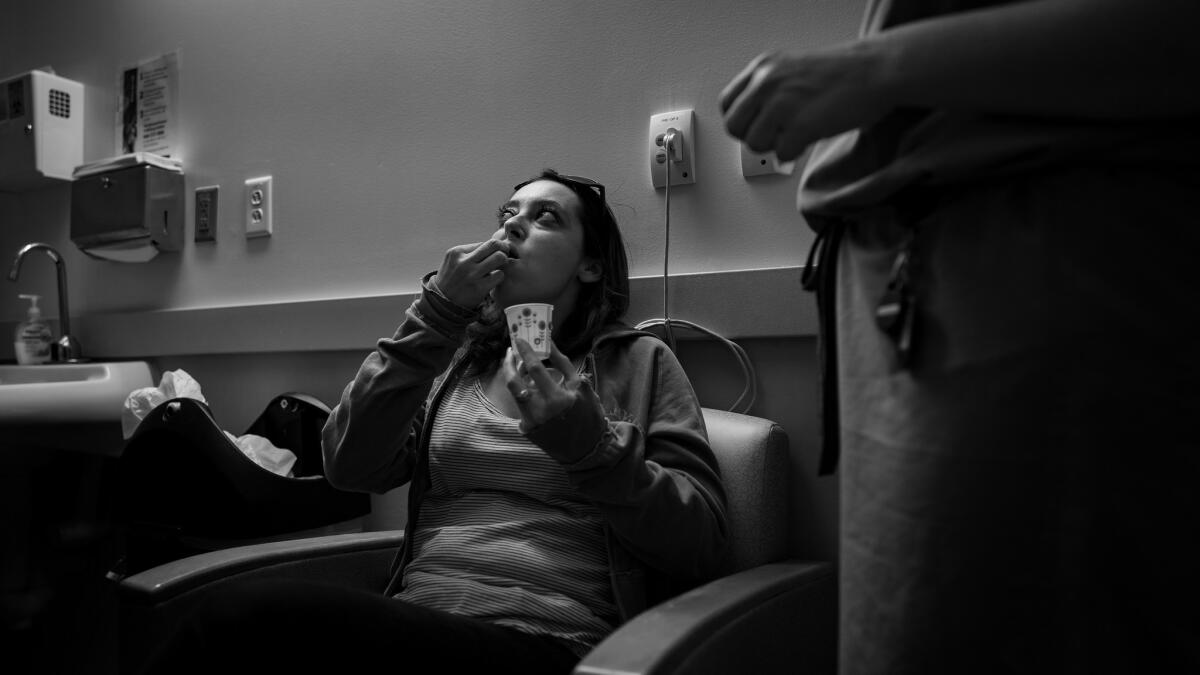
In the operating rooms, the physician performs one abortion after another. Soothing wood flute music plays. A sticker inside the door says, “Every day good women have abortions.”
Staff members coach patients through breathing exercises. One patient spends the five-minute procedure talking about how she wants to go to Dairy Queen afterward. The nurse says that she’s more of a Popsicle person.
The abortion involves no cutting or surgery. The doctor explains that an early pregnancy is simply “a clump of cells.” When she looks at what she has removed from the patient’s uterus floating in a glass dish, she sees a piece of yellowish-red tissue smaller than her little finger.
Antiabortion rhetoric has distracted from the facts, the doctor says, citing studies by Guttmacher and other research organizations. Half of abortion patients were using contraception when they got pregnant. More than half of women who have abortions already have children. Abortions are safe, about as safe as colonoscopies, which are regularly recommended by doctors.
Doctors who perform abortions say they feel especially motivated by the recent addition of Brett M. Kavanaugh to the Supreme Court, which they expect to lead to more restrictions on abortions or possibly a ban on the procedure altogether.
“If men got pregnant, you better believe that abortion wouldn’t be that big of a deal,” she says.
“If men got pregnant, you better believe that abortion wouldn’t be that big of a deal.”
— California abortion doctor
There is little common ground on abortion in the U.S. Fifty-eight percent of Americans believe abortion should be legal in all or most cases, according to the Pew Research Center. But 37% believe it should be illegal in all or most cases.
Neil Sandlin, pastor of a Baptist church near the clinic, is among those opposed to legalization. Outside the clinic, Sandlin stands next to some of his congregants, including children, holding signs that say, “Babies are a Blessing, not a Burden,” and “Babies are Murdered Here.”
Sandlin says multiple people in his congregation are waiting to adopt children. He asks women walking into clinics, “Ma’am, do you know that’s an abortion clinic?” and hopes to change their minds.
“This is the taking of innocent life,” Sandlin says, a Bible next to his feet on the sidewalk.

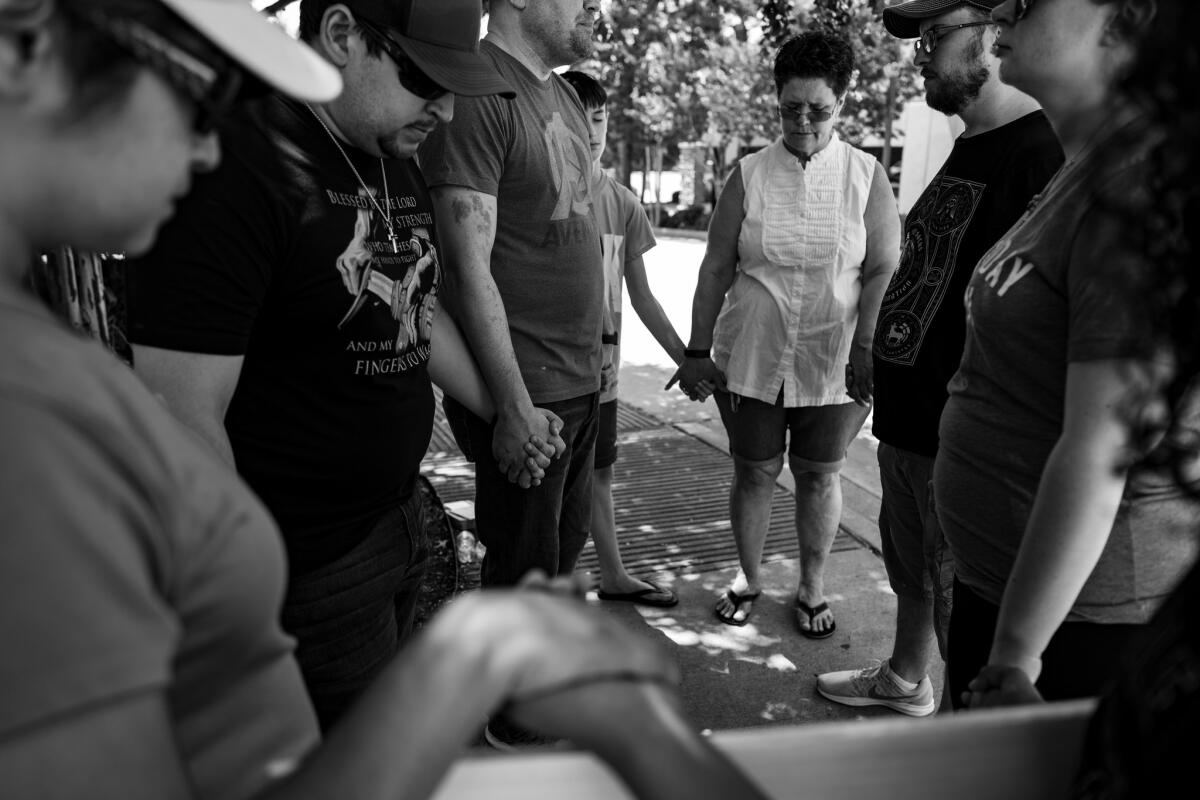
The doctor works through lunch on her second day in the clinic, later eating leftovers from the previous evening’s Mexican dinner while filling out paperwork.
The woman with twins comes back for her procedure. One woman who had seemed so sure the day before — “I’ve honestly been through this before,” she had said confidently — is a no-show. Another woman holds the pills for more than an hour, torn over whether to take them, while her 4-year-old babbles cheerfully next to her. She ultimately swallows the pills.
By 5 p.m., the doctor has slipped off her shoes and presses her pink-socked feet against the base of a chair in the doctors lounge. She is one of the last people left at the clinic.
She finishes her paperwork, yawning. She used to pack sneakers, hoping to go for a run after work, but she’s usually too tired. She knows the clinic might one day be unable to afford flying her out altogether. But as long as it is willing, she plans to keep coming.
Finally, it’s time to head out for a quiet dinner alone, then a flight back to California first thing in the morning. She flips off the light, glancing at a sign above her head with a Texas flag on it. It reads:
“Howdy Docs. Welcome back to Texas. Thank you and please come again.”
Produced by Vanessa Martinez and Brian Park.
Sign up for Essential California
The most important California stories and recommendations in your inbox every morning.
You may occasionally receive promotional content from the Los Angeles Times.








